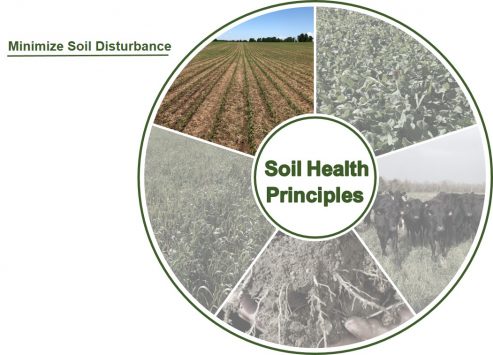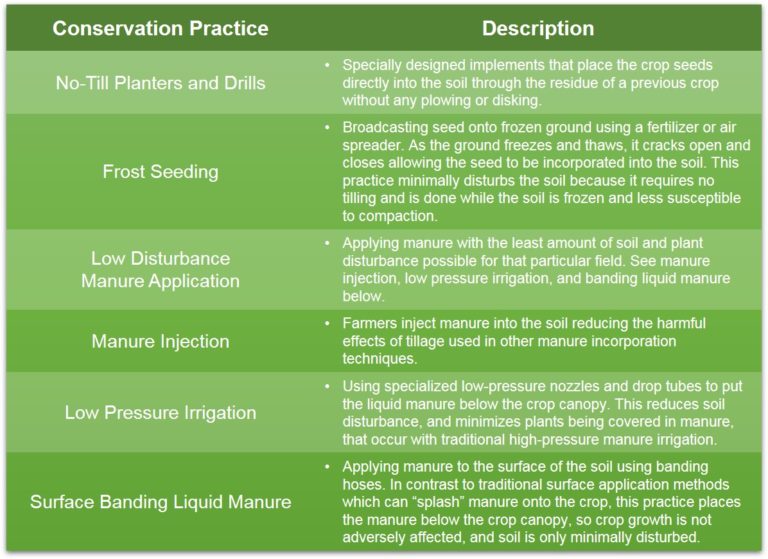Minimize Soil Disturbance
Image Credit: Jason Johnson Iowa NRCS
Minimize Soil Disturbance
Soil disturbance is defined as altering the soil.
(US Forest Service – Soil Disturbance Field Guide)
Disturbance occurs in three forms:
- Biological disturbance, such as overgrazing
- Chemical disturbance, such as over application of nutrient and pesticide
- Physical disturbance, such as tillage
- (NRCS – Soil Health Management)

Minimize Soil Disturbance
Soil disturbance is defined as altering the soil.
(US Forest Service – Soil Disturbance Field Guide)
Disturbance occurs in three forms:
- Biological disturbance, such as overgrazing
- Chemical disturbance, such as over application of nutrient and pesticide
- Physical disturbance, such as tillage
- (NRCS – Soil Health Management)

Importance
Water and air portions exist in pore spaces within healthy soil. Over time soil disturbances such as tilling reduce and remove the pore spaces from our soils. This restricts water infiltration and air exchange which reduces healthy biological activity and destroys the biological glues which hold our soils together.
Minimizing soil disturbance, such as tillage, helps:
- Reduce Erosion – Good soil structure, which is protected through minimal soil disturbance, holds soil, nutrients, and water in place. This increases water available to plants, positively impacts water and air quality, and supports good human and animal health.
- Decrease Ponding – Pore spaces in minimally disturbed soils increase water infiltration and reduce runoff, therefore decreasing ponding of water on the soil surface.
- Reduce Crusting – In soil that has been disturbed, a firm layer (crust) forms on top of the soil. Crusting is caused by the destruction of soil aggregates (a.k.a. soil particles) by tillage and raindrop impacts on bare soil. By minimizing soil disturbance, the soil maintains larger aggregates which are more resilient to crusting.
- Protects Soil Organic Matter – Soil organic matter, or plant/animal material decomposed in the soil, provides nutrients and habitat to organisms living in the soil, improves the soil’s water holding capacity, and binds soil particles into aggregates. Protecting soil organic matter allows each of these functions to continue.
- IMPROVE SOIL HEALTH!
- (NRCS – Minimize Disturbance)
A close-up look at a no-till planter on Nick Kleiber’s farm.
Watch a no-till planter at work as Nick, of Dallman East River Dairy, LLC plants corn using no-till into green winter rye. This combination of practices helps protect soil health by keeping living roots in the soil and eliminating tillage that can harm soil structure.
Our Farmers at Work
Our Farmers at Work
The Between the Lakes Demonstration Farm Network farmers are working to minimize soil disturbance.
The Between the Lakes Demonstration Farm Network farmers are working to minimize soil disturbance.
Learn how they do this in the chart below.
To do this, they use

